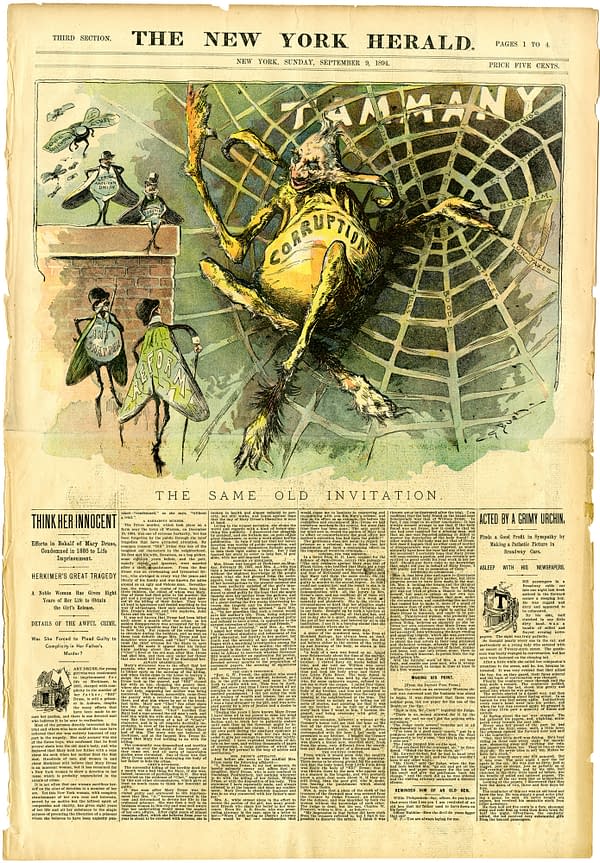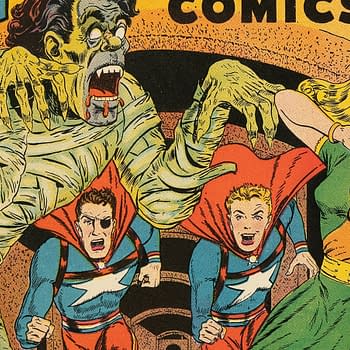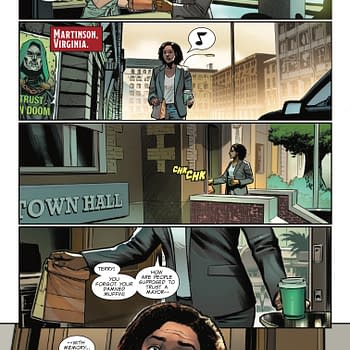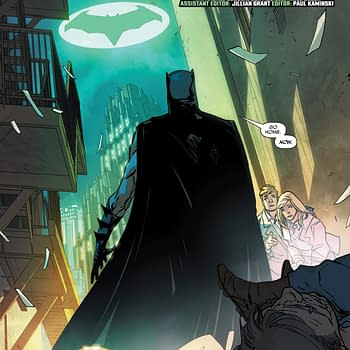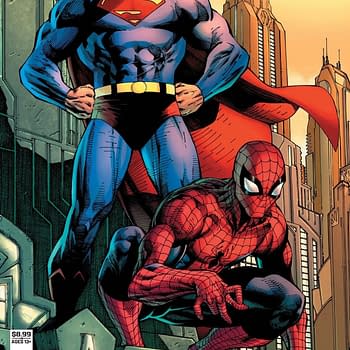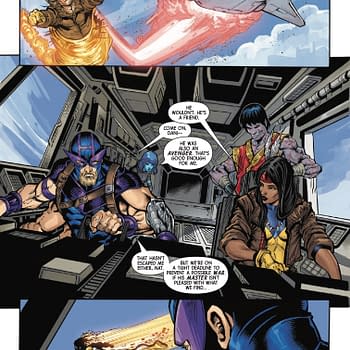Posted in: Comics, Vintage Paper | Tagged: charles g. bush, new york herald, tamany hall, the issue
THE ISSUE: The Tangled Political Spider Web of Charles G. Bush
This issue of the New York Herald, September 9, 1894, Sunday Color Section features a political cartoon by Charles G. Bush from the earliest era of America's color newspaper sections. The color Inter Ocean Illustrated Supplement had launched in 1892. In the subsequent two years, the techniques and artistry of the form in color on newsprint had steadily improved ahead of their early color star turn in 1895 with Richard Felton Outcault's Hogan's Alley beginning in 1895.
The Issue is a regular column about vintage comics and other vintage periodicals from throughout world history. The idea behind The Issue is simple: for each post, I'll choose something from my collection and talk about what's going on in it, and discuss the publishers and creators behind it. And essentially, I'm just going to end up stepping through comics history one issue at a time. There is only one rule in The Issue: No recent stuff. Everything will be from before 1940, and most of it will be from before 1920.
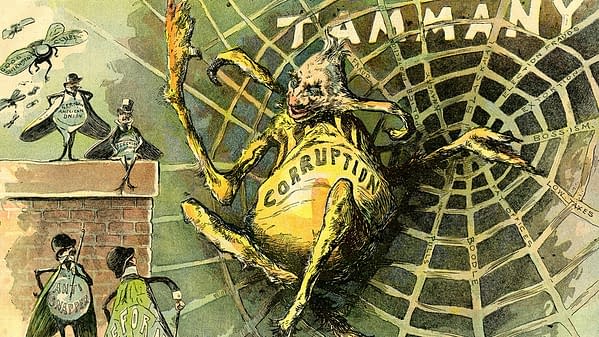
Artist Charles G. Bush was considered one of the best cartoonists of his time by his peers, and he worked for most of the significant NYC papers during his long career. In a 1904 issue of The World To-day: A Monthly Record of Human Progress, Ingram A. Pyle noted:
Since the death of the elder Keppler and Gillam and the veteran Thomas Nast, Charles G. Bush is the oldest cartoonist actively engaged in New York. Bush has the distinction of being the originator of the daily newspaper cartoon. He is a man seventy-one years of age, having been born in Boston in 1842.
As is clear from this New York Herald cartoon, Bush sometimes used his art to crusade against Tammany Hall corruption just as Thomas Nast had done. As for the particular subject here, the "Anti-Snapper" and "Reform" labels on the flies in the foreground tells the tale. The book Ashbel P. Fitch: Champion of Old New York by David F. Remmington sets the background:
In January 1892, the Democratic National Committee set the time and place for the national convention as June 21 in Chicago. The New York committee then set the time and place for the state convention as February 22 in Albany, well before upstate roads were cleared of snow. The public reaction to the much-too-early date reinforced the the perception of many voters that Hill was slippery. It was seen as a way for Hill to try to gain an advantage for his urban supporters over his rural opponents and as an attempt to spawn a national Hill bandwagon. The convention had never before been held before mid-April. The public response was immediate. The Reform Club of New York fastened the label "snap" on the premature convention. The name stuck, and it hurt Hill. His supporters became "snappers," and Cleveland's were "anti-snappers".
But that's not former New York Governor and then U.S. Senator from New York David B. Hill at the center of that web. It appears to be the Hill's associate and his Lieutenant Governor of New York, Edward F. Jones. Jones had moved from public office to private business by this time. But with his massive and wild mustache seemingly twisted into spider's appendages by Bush here, and his long shock of white hair, Jones is undoubtedly the spider at the center of this web of corruption.
